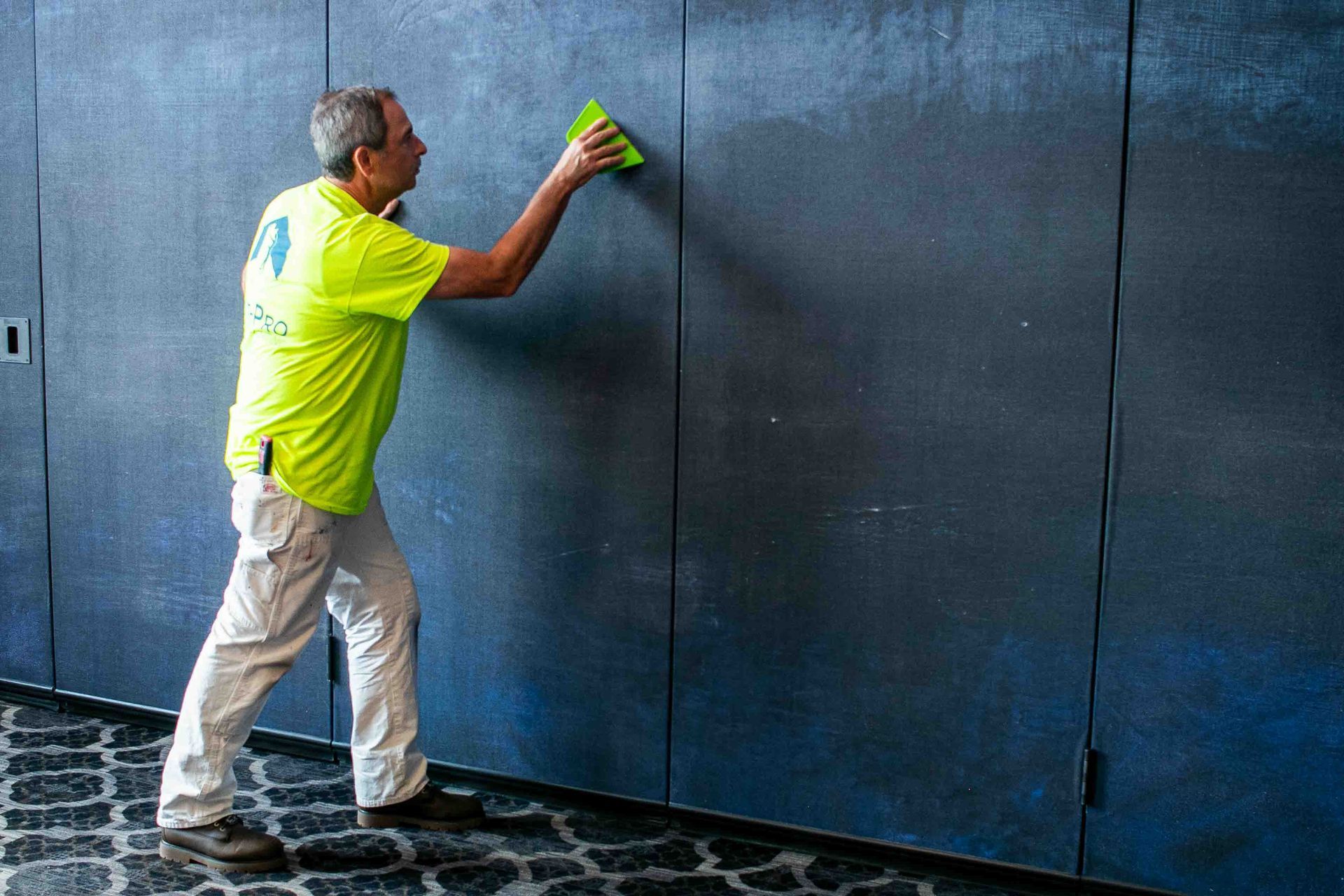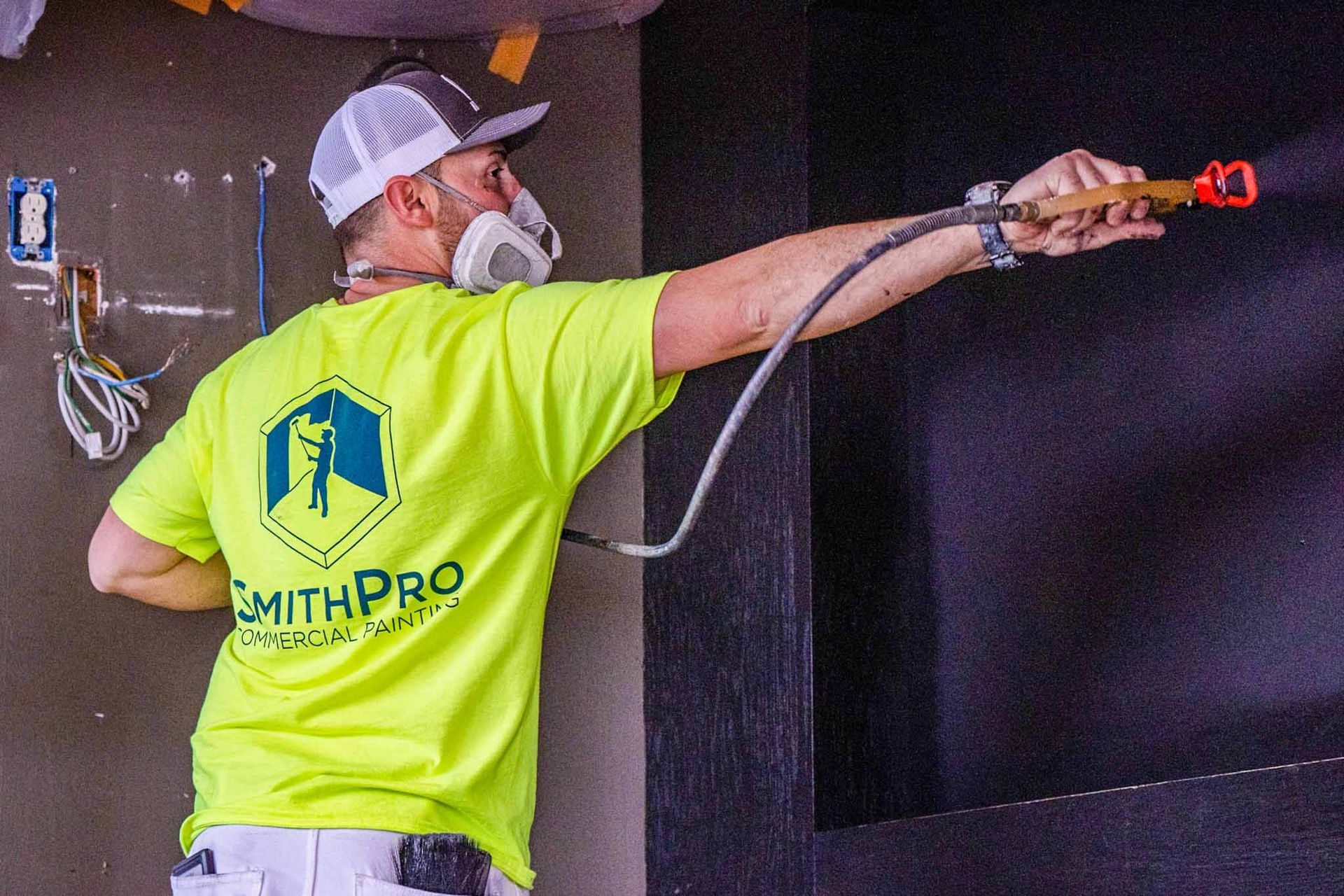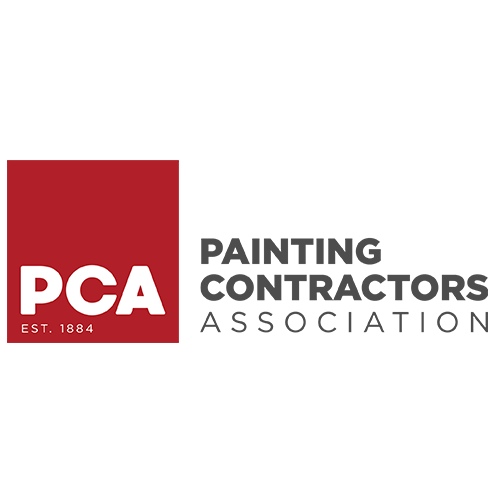Paint isn’t just about aesthetics; it’s a shield for your building, protecting surfaces from weather, wear, and time.
When paint starts to fail, it’s more than a cosmetic issue. Peeling, chalking, checking, and blistering can signal deeper problems that threaten your property’s value and longevity.
At SmithPro Commercial Painting, we believe that understanding the root causes of paint failure is the first step toward lasting results.
Peeling: When Paint Loses Its Grip
Few things are more frustrating than seeing paint peel away in sheets or flakes, exposing the bare substrate beneath. Peeling is often the result of poor surface preparation; maybe the walls weren’t cleaned thoroughly, or a primer was skipped.
Moisture intrusion is another major culprit; water from leaks, condensation, or high humidity can become trapped behind the paint, causing it to separate from the surface. Sometimes, the wrong type of paint or improper application methods are to blame.
To fix peeling, it’s essential to remove all loose paint, clean and dry the surface, address any moisture issues, and use a high-quality primer before repainting the desired area.
Important reminder: if you're in an older building, make sure the peeling paint is not lead based; if it is, stop what you're doing and call professionals who can help you mitigate the issues.
Chalking: The Powdery Problem
If you’ve ever run your hand over a painted surface and found a fine, powdery residue, you’ve encountered chalking.
This issue is caused by sunlight and weather breaking down the binders in paint, leaving behind loose pigment. Lower-quality paints are especially prone to chalking, but even the best products will eventually show signs of wear in harsh climates.
The solution is straightforward: wash away the chalk before repainting, and choose premium, UV-resistant paints for exterior surfaces. Regular maintenance, like gentle rinsing, can help slow the process and keep your building looking fresh.

Checking and Cracking: The Alligator Effect
Cracking and checking, sometimes called “alligatoring”, are easy to spot but harder to ignore. These issues show fine lines or deeper, patterned cracks in the paint film.
This issue is often caused by applying paint too thickly, layering incompatible products, or exposing surfaces to extreme temperature swings. Old oil-based paints are especially vulnerable, losing their flexibility over time and cracking in climates with lots of freeze-thaw cycles.
To fix cracking, you’ll need to remove the damaged paint, sand and prime the surface, and use compatible products applied in thin, even coats. Timing matters too; paint in moderate temperatures and avoid direct sunlight or freezing conditions for best results.
Blistering: Bubbles Beneath the Surface
Blistering is another common complaint, and it’s one that can puzzle even seasoned facility managers.
Blisters appear as bubbles under the paint, sometimes breaking open to reveal the bare substrate. They’re usually caused by moisture trapped beneath the paint or by painting in hot, sunny conditions that make the surface dry too quickly. Sometimes, contaminants like oil or dust are to blame.
To tackle blistering, start by identifying the cause: break open a blister to see if it’s due to moisture or heat.
If moisture is the culprit, ensure that you repair leaks, improve drainage, and keep surfaces dry before painting.
If heat is the issue, paint in cooler conditions and avoid direct sun. Remove blisters, sand, prime, and repaint with high-quality products for a smooth, lasting finish.

Prevention: The Professional Approach
At SmithPro Commercial Painting, we know that prevention is the best cure for paint failure.
Our approach starts with thorough surface preparation; pressure washing, scraping, sanding, patching, and priming are never skipped or rushed. We carefully select products that match your building’s needs and environment, choosing commercial-grade paints for durability and longevity.
Our expert crews follow manufacturer guidelines for temperature, humidity, and drying times, ensuring every coat performs as intended.
Once our crews are finished, the work doesn’t end. Ensure you conduct regular inspections and touch-ups to catch issues early and maintain a professional appearance throughout the year.
When to Call the SmithPro Commercial Painting Experts
If you spot peeling, chalking, checking, or blistering in your facility, don’t wait for the problem to get worse.
These symptoms often indicate deeper issues, such as moisture, substrate damage, or incompatible coatings, that require a professional assessment.
Our expert team can diagnose the root cause, recommend the right fix, and restore your building’s protection and curb appeal.
Ready to protect your investment and keep your property looking its best?
Contact us for a property and project assessment, and discover how expert care can prevent paint failure and deliver lasting results.











